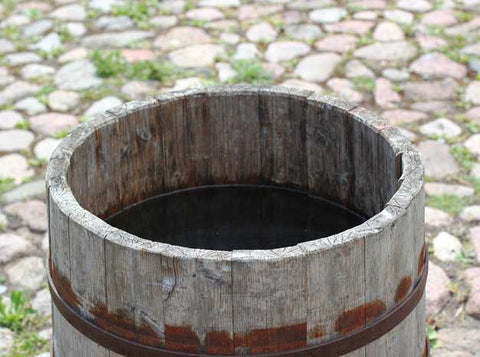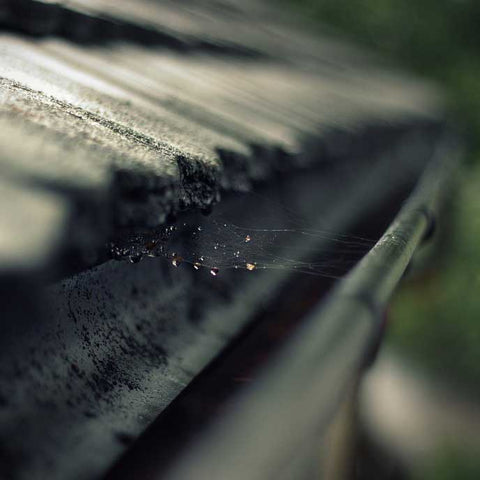Hey there, garden friends! Can you smell that? It's the scent of spring in the air, complete with the sweet promise of rain showers! As we bid farewell to the chilly days of winter, it's time to embrace the revitalizing downpours that come with the season. But wait, before you dismiss those raindrops as mere puddle-makers, let's talk about a little something called rainwater collection.
Now, I know what you might be thinking. Rainwater collection? Isn't that just for hardcore environmentalists or off-grid homesteaders? Well, think again! Rainwater collection is not only eco-friendly but also surprisingly practical for your everyday homeowner. So, grab your umbrellas and let's dive into why collecting rainwater during those spring showers is a neighborly endeavor we can all get behind.
Embracing the Splash: Why Rainwater Matters
First things first, why should we care about collecting rainwater in the first place? Well, besides the fact that it's a sustainable practice, there are plenty of reasons to jump on the rain barrel bandwagon:
- Water Conservation: Let's face it, water is a precious resource. By collecting rainwater, we can reduce our reliance on municipal water sources, especially during dry spells or droughts.
- Save Some Green: Not only does rainwater come free of charge, but collecting it can also help you save on your water bill. Talk about a win-win situation!
- Garden Gold: Rainwater is pure liquid gold for your plants. Unlike tap water, it's free from chlorine and other chemicals, making it a nourishing elixir for your garden.
- Flood Prevention: By collecting rainwater, you can prevent excess water from pooling around your home's foundation, reducing the risk of flooding and water damage.
Neighborly Solutions: Rainwater Collection Options
Now that we've covered why rainwater collection is the bee's knees, let's talk about how you can get started right in your own backyard. Here are a few neighbor-approved options to consider:

- Rain Barrels: Ah, the classic rain barrel. These beauties come in all shapes and sizes, and they're perfect for catching runoff from your roof. Simply place them beneath your downspouts, and voila! You've got yourself a rainwater reservoir.
- Gutter Extensions: Don't have space for a rain barrel? No problem! You can still channel rainwater away from your home by installing gutter extensions or downspout diverters. These handy gadgets help direct water to areas where it can be absorbed by the soil, like your garden or lawn.
- Rain Chains: Who says collecting rainwater can't be stylish? Enter the rain chain – an elegant alternative to traditional downspouts. These decorative chains guide water from your roof to the ground below, adding a touch of whimsy to your outdoor space.
- Permeable Pavers: Looking to level up your rainwater game? Consider installing permeable pavers in your driveway or patio. These porous surfaces allow rainwater to seep into the ground, replenishing the earth's natural aquifers and reducing runoff.
Flood-Proofing Your Home
Along with collecting rainwater, flood-proofing around your home is a crucial step in preparing for spring showers that can sometimes turn into deluges. Here are three in-depth strategies to help you fortify your home against flooding:
Grade Your Landscape:
One of the most effective ways to prevent flooding around your home is by ensuring proper grading of your landscape. The ground around your house should slope away from the foundation, allowing rainwater to naturally drain away from the building. Start by inspecting the terrain around your home and identifying any low-lying areas where water tends to accumulate. Use fill dirt to build up these areas, creating a gentle slope away from the foundation. Be sure to compact the soil properly to prevent erosion. Additionally, consider installing French drains or swales to channel water away from vulnerable areas. By carefully grading your landscape, you can significantly reduce the risk of water seeping into your home during spring showers.
Clean Your Rain gutters:

Clogged rain gutters cause a lot of problems during a storm. If leaves and dirt block the gutters the water ends up pouring over the side, down your homes walls and pooling up on the ground below in unwanted spots. Installing gutter guards can keep leaves and debris from filling up the gutters and keep that water flowing away from your roof, like it's supposed to.
Protect Your Foundation:
Your home's foundation is its first line of defense against flooding, so it's essential to take measures to protect it during spring showers. Start by inspecting the exterior of your foundation for cracks or gaps where water could penetrate. Seal any openings with waterproof caulk or hydraulic cement to prevent water intrusion. Next, consider installing foundation vents to allow air to circulate beneath your home, reducing moisture buildup. If your basement or crawl space tends to flood during heavy rains, invest in a sump pump to quickly remove excess water. Regular maintenance of your gutters and downspouts is also critical to ensure that rainwater is effectively diverted away from the foundation. By fortifying your foundation against water damage, you can safeguard your home from costly flooding repairs.
Waterproof Your Windows and Doors:
Windows and doors are common entry points for water during spring showers, so it's essential to waterproof them properly. Start by inspecting the seals around your windows and doors for signs of wear or damage. Replace any worn weather-stripping and apply a bead of silicone caulk along the edges to create a watertight seal. Consider installing flood barriers or sandbags around vulnerable entry points to create an additional barrier against rising water levels. If you live in an area prone to severe flooding, you may want to invest in flood-resistant windows and doors that can withstand high water pressure. Finally, consider elevating any electrical appliances or HVAC systems in your basement or crawl space to prevent water damage in the event of a flood. By waterproofing your windows and doors, you can minimize the risk of water intrusion and protect your home from spring showers.
Conclusion and A Rainy-Day Challenge
Alright, dear neighbors, are you up for a little challenge? This spring, let's make a pact to embrace the rain and make the most of those precious droplets. Whether you opt for a classic rain barrel or get creative with gutter extensions, every drop counts when it comes to rainwater collection. Flood-proofing around your home is essential for mitigating the risk of water damage during spring showers. By grading your landscape, protecting your foundation, and waterproofing your windows and doors, you can create a resilient barrier against flooding and safeguard your home for years to come.
So, the next time you hear the pitter-patter of rain against your window, don't curse the clouds – celebrate them! Together, we can turn those spring showers into a neighborly endeavor that benefits us all.
Until next time, happy collecting, my rain-loving friends!




